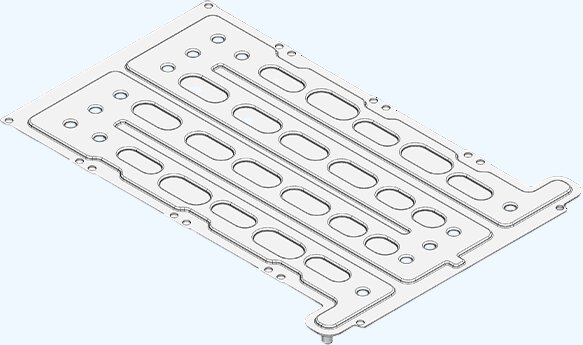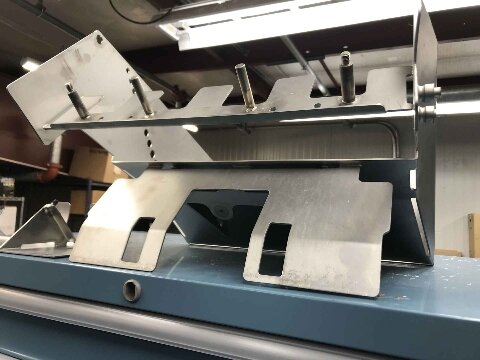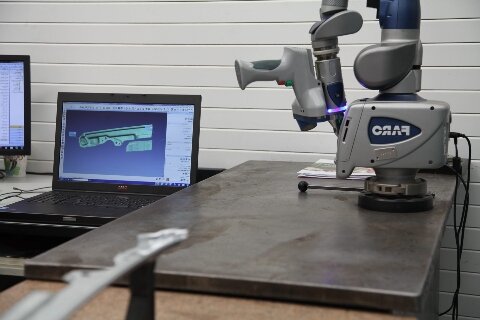No mundo acelerado de hoje, os métodos de fabrico tradicionais têm muitas vezes dificuldade em satisfazer a procura de entregas rápidas e produtos personalizados. O fabrico a pedido oferece uma solução para este desafio. Permite às empresas produzir artigos quando necessário, reduzindo a necessidade de inventários extensos e longos tempos de espera. Esta mudança reformula a forma como as empresas abordam a produção, proporcionando mais flexibilidade e eficiência.
Os métodos de fabrico tradicionais já não satisfazem as exigências do mercado atual. Deixe-me mostrar-lhe como o fabrico a pedido cria novas possibilidades para empresas como a sua.
O que é o fabrico a pedido?
O fabrico a pedido é um processo em que os produtos são fabricados apenas quando são encomendados. Em vez de produzir grandes quantidades antecipadamente, os artigos são criados à medida das necessidades.
Este método é mais flexível e económico, permitindo que as empresas se concentrem em séries de produção mais pequenas. As empresas podem criar produtos que satisfaçam as necessidades específicas dos clientes sem perder tempo ou recursos em stocks não vendidos.
Como funciona o fabrico a pedido?
O processo segue três etapas principais. Primeiro, os clientes enviam os seus modelos 3D ou ficheiros de design. Em seguida, sistemas automatizados verificam esses ficheiros e criam planos de produção. Por último, máquinas modernas produzem as peças utilizando as especificações aprovadas.
O novo software ajuda a acompanhar cada encomenda do início ao fim. Os clientes recebem actualizações em tempo real sobre o estado do seu projeto. Os controlos de qualidade são efectuados em pontos-chave para detetar atempadamente quaisquer problemas.
As ferramentas digitais facilitam todo o processo. Ajudam na fixação de preços, programação e planeamento da produção. Isto significa orçamentos mais rápidos e datas de entrega mais precisas.

Fabrico a pedido vs Fabrico tradicional: Quais são as diferenças?
O fabrico a pedido e o fabrico tradicional são duas abordagens diferentes à produção. Cada uma tem os seus pontos fortes e fracos. Vamos analisar as principais diferenças para o ajudar a compreender qual o método que melhor se adequa às suas necessidades.
Velocidade de produção
O fabrico a pedido é mais rápido. Permite às empresas produzir rapidamente peças e produtos, muitas vezes em dias ou horas. Isto deve-se ao facto de a produção só começar depois de ser feita uma encomenda.
O fabrico tradicional demora semanas ou meses a entregar os produtos acabados. A configuração requer longos ciclos de planeamento e preparação de ferramentas. Os grandes lotes passam lentamente por várias fases de produção.
Capacidades de personalização
A produção em massa limita as alterações de design. Os métodos tradicionais requerem novas ferramentas dispendiosas para cada alteração, tornando os produtos personalizados demasiado dispendiosos para pequenas séries.
Os sistemas a pedido permitem actualizações rápidas do design. Os fabricantes podem alterar facilmente as especificações entre encomendas. Os controlos digitais significam que não há custos de ferramentas adicionais, tornando os produtos personalizados práticos em qualquer volume.
Eficiência de custos
Os métodos tradicionais requerem grandes investimentos iniciais. As empresas têm de encomendar grandes quantidades para reduzir os custos por unidade, o que resulta na retenção de dinheiro em stocks que podem não ser vendidos.
A produção a pedido tem custos de arranque reduzidos. O cliente paga exatamente o que precisa. A ausência de encomendas mínimas significa um melhor fluxo de caixa. Os preços mantêm-se estáveis para pequenas e médias tiragens.
Flexibilidade
Os métodos antigos prendem-no a um único desenho durante meses. A mudança de produtos implica atrasos dispendiosos e desperdício de materiais; as mudanças no mercado podem deixá-lo com um inventário desatualizado.
Os sistemas a pedido adaptam-se rapidamente às mudanças. Os novos produtos são lançados sem longos períodos de preparação e as actualizações de design ocorrem entre encomendas. Isto ajuda as empresas a responder rapidamente às exigências do mercado.
Diferentes processos utilizados no fabrico a pedido
O fabrico a pedido utiliza diferentes processos para criar produtos personalizados. Vamos examinar alguns métodos padrão utilizados neste processo.
Maquinação CNC
Maquinação CNC envolve máquinas controladas por computador que cortam e moldam materiais como o metal ou o plástico. É conhecida pela sua precisão e capacidade de criar peças complexas. A maquinagem CNC funciona bem para o fabrico a pedido porque permite ajustes rápidos no design.
impressao 3D
impressao 3Dou fabrico aditivo, constrói objectos camada a camada a partir de desenhos digitais. Este processo pode produzir formas complexas que são difíceis de criar com os métodos tradicionais. A impressão 3D é frequentemente utilizada para protótipos ou pequenas séries de produção.
Fabrico de chapas metálicas
Fabrico de chapas metálicas envolve o corte, a dobragem e a montagem de chapas metálicas para criar produtos. É frequentemente utilizado para fabricar peças como caixas, molduras e painéis. O fabrico a pedido beneficia do fabrico de chapas metálicas porque permite a produção rápida de peças duradouras e personalizadas.
Moldagem por injeção
Moldagem por injeção é um processo em que o material fundido, normalmente plástico, é injetado num molde para formar uma peça. Este processo é conhecido por produzir rapidamente peças consistentes e de alta qualidade. Embora seja frequentemente utilizado para a produção de grandes volumes, também pode funcionar bem no fabrico a pedido, uma vez criado o molde.
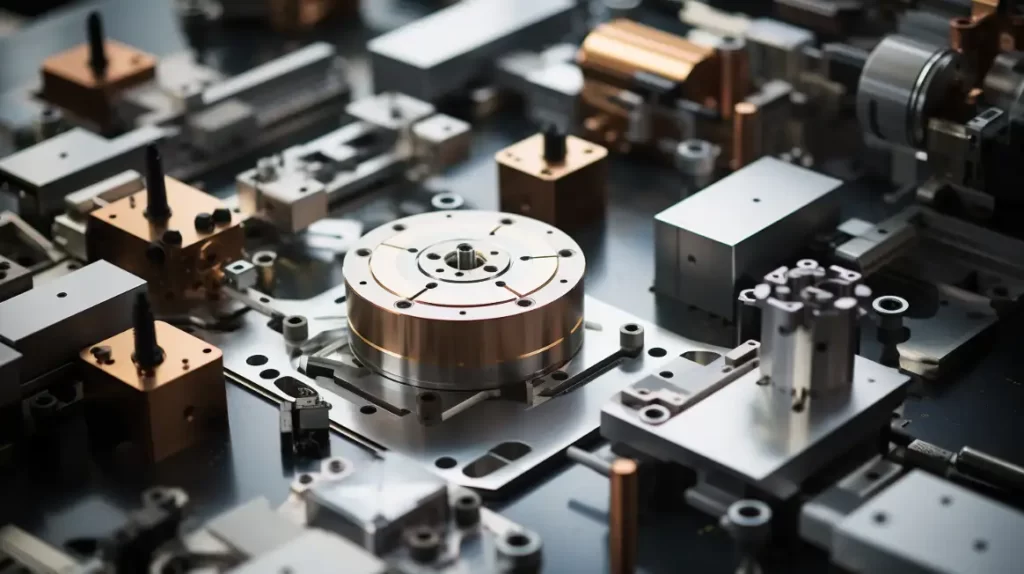
As vantagens do fabrico a pedido
O fabrico a pedido oferece várias vantagens que o tornam uma opção atractiva para as empresas. Vamos analisar as principais vantagens.
Tempos de execução reduzidos e prazos de entrega mais rápidos
O fabrico a pedido reduz significativamente os prazos de entrega. Os produtos são fabricados apenas quando necessário, eliminando a espera associada à produção em massa tradicional. Esta maior rapidez de resposta ajuda as empresas a responder rapidamente às exigências do mercado e aos pedidos dos clientes.
Elevado nível de personalização
O fabrico a pedido permite alterações fáceis no design e na produção. Esta flexibilidade é perfeita para criar produtos únicos ou especializados. Quer necessite de um protótipo ou de uma peça personalizada, este método pode satisfazer os seus requisitos específicos.
Melhor eficiência da cadeia de suprimentos
Em vez de fabricar produtos com antecedência e armazená-los, os produtos são fabricados quando necessário. Isto reduz o risco de sobreprodução ou de rutura de stock. As empresas podem gerir melhor o seu inventário e responder rapidamente às alterações da procura.
Produção rentável para pequenas séries
O fabrico a pedido permite que as empresas produzam lotes mais pequenos sem os elevados custos associados à configuração e às ferramentas, o que o torna ideal para empresas em fase de arranque e pequenas empresas.
Impacto ambiental e benefícios para a sustentabilidade
Uma vez que os produtos são fabricados apenas à medida das necessidades, há menos desperdício. As empresas não têm de armazenar artigos não vendidos, o que significa menos embalagens e transporte. Este processo ajuda a reduzir os resíduos e a pegada de carbono, promovendo a sustentabilidade.
Limitações do fabrico a pedido
O fabrico a pedido tem muitas vantagens, mas também tem alguns desafios. Vamos examinar essas limitações.
Disponibilidade limitada de tecnologias especializadas
O fabrico a pedido baseia-se na impressão 3D, na maquinagem CNC e no corte a laser. No entanto, nem todas as empresas têm acesso a estas ferramentas ou os conhecimentos necessários para as utilizar. A criação da infraestrutura necessária pode ser dispendiosa e requer conhecimentos técnicos significativos.
Dependência da cadeia de abastecimento
O fabrico a pedido depende de uma cadeia de abastecimento que funcione corretamente. Uma vez que os produtos são fabricados quando necessário, as matérias-primas e as peças têm de estar disponíveis a tempo. Qualquer perturbação - como atrasos na expedição ou problemas com os fornecedores - pode causar atrasos na produção.
Variabilidade potencial da qualidade
Embora o fabrico a pedido ofereça flexibilidade, pode haver inconsistências de qualidade. Isto pode acontecer quando são utilizados processos ou tecnologias diferentes. Pequenas variações na forma como os produtos são fabricados podem resultar em diferenças subtis na qualidade.
Problemas de escalabilidade para produção de grandes volumes
O fabrico a pedido é excelente para pequenas séries ou encomendas personalizadas, mas pode ter dificuldades com a produção de grandes volumes. À medida que as encomendas aumentam, o processo pode tornar-se mais lento e mais dispendioso.
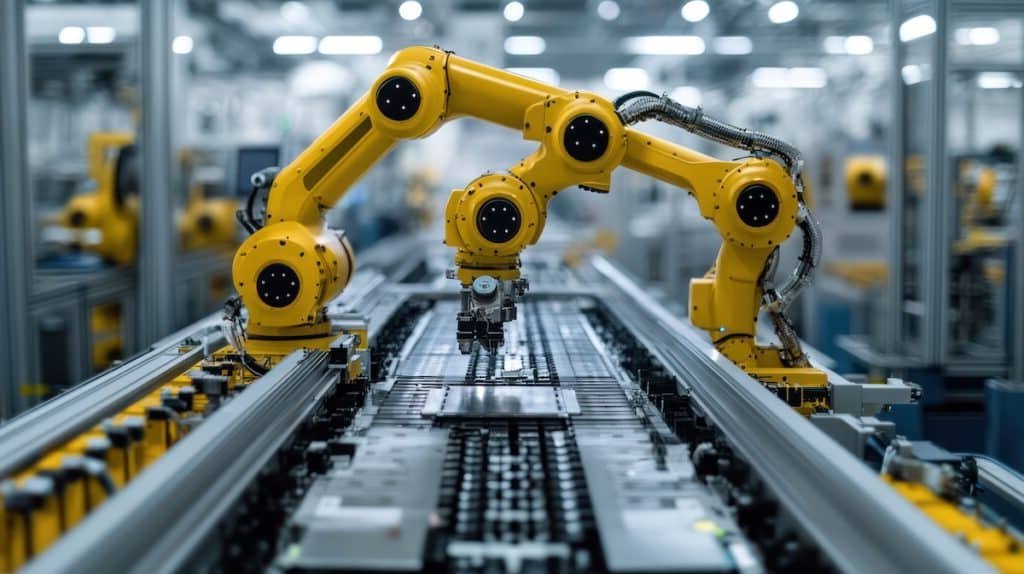
Indústrias que beneficiam do fabrico a pedido
O fabrico a pedido transforma várias indústrias ao oferecer soluções de produção mais rápidas e flexíveis. Eis alguns dos principais sectores que estão a colher os benefícios desta abordagem inovadora.
Automóvel
A indústria automóvel beneficia significativamente do fabrico a pedido. Permite a produção rápida de peças e protótipos personalizados. Isto é crucial para testar novos projectos e fazer ajustes rápidos.
Aeroespacial
No sector aeroespacial, o fabrico a pedido ajuda a criar peças leves e duradouras com elevada precisão. Este método é ideal para fabricar componentes leves que cumprem as normas rigorosas da indústria. Também permite modificações rápidas, o que é essencial para projectos aeroespaciais.
Eletrônicos de consumo
A indústria da eletrónica de consumo prospera com a inovação e a rapidez. O fabrico a pedido ajuda as empresas a produzir rapidamente protótipos e pequenos lotes de novos produtos. Isto acelera o processo de desenvolvimento e permite um tempo de colocação no mercado mais rápido.
Dispositivos médicos
A indústria dos dispositivos médicos beneficia do fabrico a pedido devido à sua capacidade de criar produtos personalizados. Muitos dispositivos médicos têm de ser adaptados às necessidades específicas dos doentes. Também permite a criação rápida de protótipos, ajudando os fabricantes a colocar novas soluções médicas no mercado mais rapidamente.
Conclusão
O fabrico a pedido está a revolucionar a produção de produtos. Oferece às empresas prazos de entrega mais rápidos, personalização e soluções económicas para pequenas séries de produção. Embora existam desafios, como o acesso limitado a tecnologias especializadas e preocupações com a escalabilidade, os benefícios superam de longe as desvantagens para muitas indústrias.
O fabrico a pedido pode ser a solução se pretender racionalizar o seu processo de produção e reduzir os prazos de entrega. Contactar hoje para saber como pode ajudar a sua empresa a manter-se à frente da concorrência.
Olá, chamo-me Kevin Lee

Nos últimos 10 anos, tenho estado imerso em várias formas de fabrico de chapas metálicas, partilhando aqui ideias interessantes a partir das minhas experiências em diversas oficinas.
Entrar em contacto

Kevin Lee
Tenho mais de dez anos de experiência profissional no fabrico de chapas metálicas, especializando-me em corte a laser, dobragem, soldadura e técnicas de tratamento de superfícies. Como Diretor Técnico da Shengen, estou empenhado em resolver desafios complexos de fabrico e em promover a inovação e a qualidade em cada projeto.

